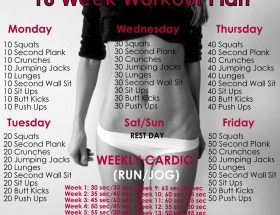Stress is an integral part of our lives, and finding effective ways to manage it is essential for our mental and physical well-being. While there are numerous strategies to combat stress, exercise has emerged as one of the most powerful and scientifically-backed methods. This article explores the science behind exercise as stress relief and provides practical strategies for incorporating exercise into our daily routines.
The Science Behind Exercise and Stress Relief
Engaging in physical activities promotes the release of endorphins, known as “feel-good” hormones, in our brains. These endorphins interact with our brain receptors, reducing pain sensations and creating a sense of euphoria. Regular exercise has also been found to increase the production of neurotransmitters like serotonin and dopamine, which are associated with improved mood and reduced feelings of anxiety and depression.
Moreover, engaging in physical activities stimulates the growth of new neurons, particularly in the hippocampus, the region responsible for memory and learning. This promotes better cognitive function and enhances our ability to deal with stressors effectively. Exercise also reduces the secretion of stress hormones, such as cortisol, which are linked to various health problems when chronically elevated.
Types of Exercise for Stress Relief
When it comes to using exercise as a stress relief tool, various types of activities can be beneficial. Aerobic exercises, such as running, swimming, and cycling, increase heart rate and oxygen circulation, which helps in releasing endorphins. Strength training exercises, on the other hand, boost self-confidence, improve body image, and provide a sense of accomplishment, all of which contribute to stress reduction. Mind-body exercises like yoga and tai chi combine physical movements with deep breathing and mindfulness, promoting relaxation and reducing stress levels.
Strategies for Incorporating Exercise into Daily Routine
Finding time and motivation for exercise can be challenging amidst our busy schedules. However, with the following strategies, incorporating exercise into our daily routines becomes more feasible:
Schedule it: Treat exercise as a non-negotiable appointment and block out specific times for it in your calendar. Consistency is key!
Find activities you enjoy: Experiment with different types of exercise until you find the ones that you truly enjoy. This increases the likelihood of sticking to your routine.
Start slow: If you’re new to exercise or have been inactive for a while, start with short sessions and gradually increase the duration and intensity over time.
Make it social: Find a workout buddy or join group fitness classes to make exercise more enjoyable and hold yourself accountable.
Integrate exercise into daily activities: Take stairs instead of elevators, walk or cycle to work instead of driving, or incorporate simple exercises during breaks at work.
Conclusion
Exercise is a powerful stress relief tool backed by scientific evidence. It not only releases endorphins and improves our mood but also enhances cognitive function and reduces stress hormone levels. By incorporating exercise into our daily routines and using effective strategies like scheduling, finding enjoyable activities, and starting slow, we can effectively manage stress and lead healthier and more fulfilling lives.








